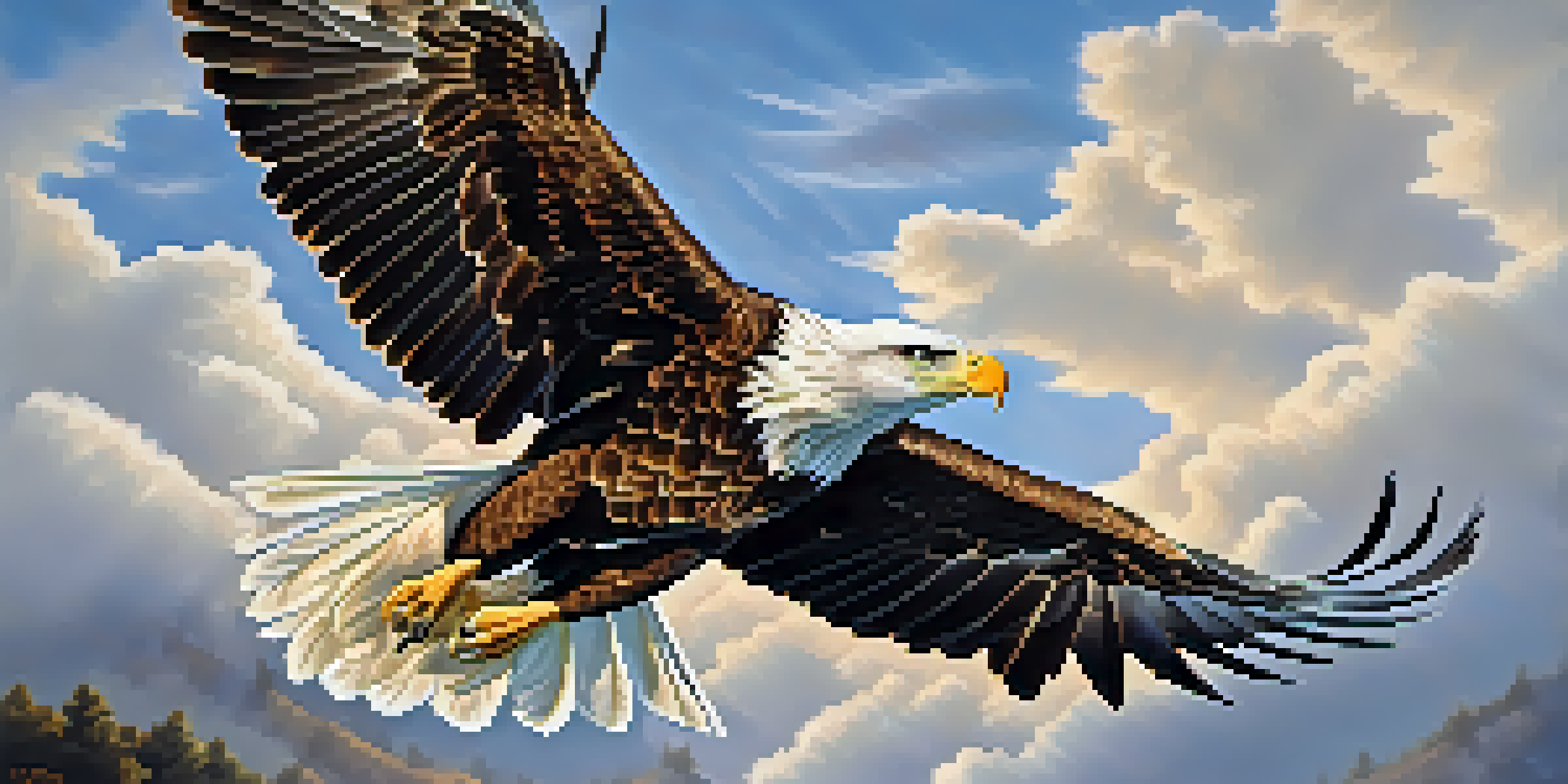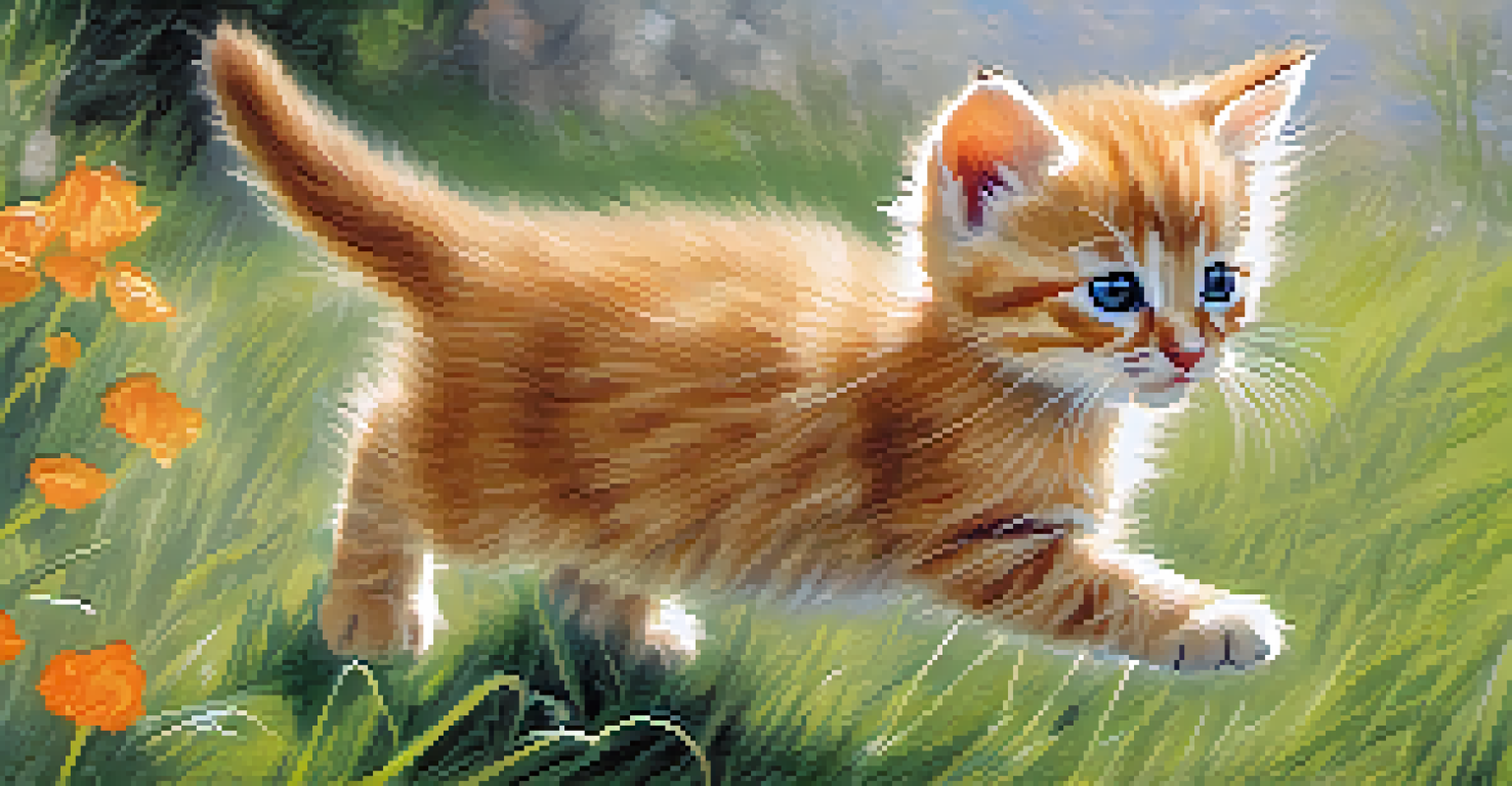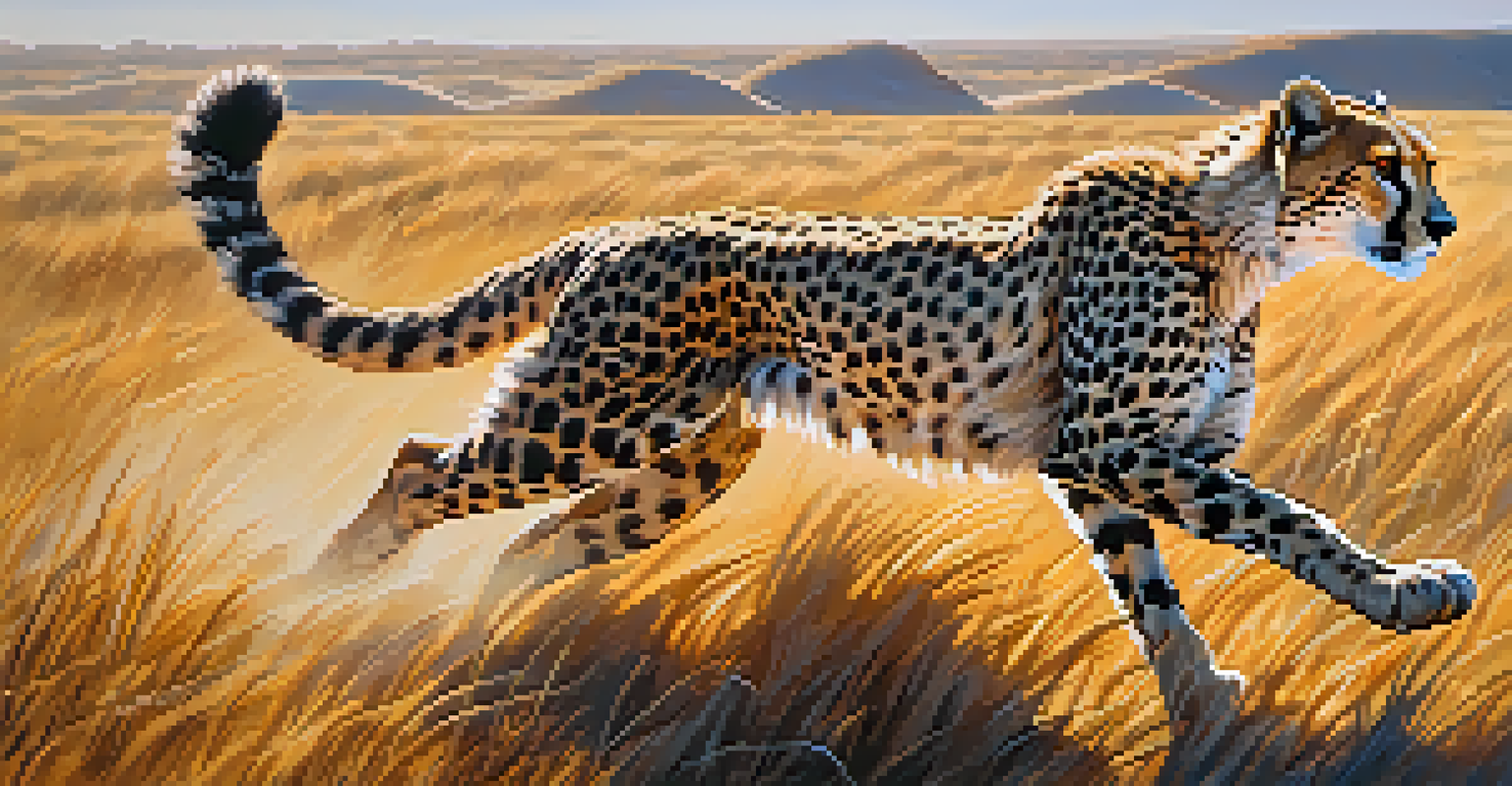Techniques for Capturing Movement in Animal Wood Carvings

Understanding the Essence of Movement in Animal Carvings
To successfully capture movement in wood carvings, one must first understand the essence of the animal being depicted. Every creature has unique traits and behaviors that convey a sense of motion, whether it’s a galloping horse or a soaring eagle. Observing these animals in their natural habitats can provide invaluable insights.
Art is the most beautiful of all lies.
For instance, notice how a cheetah's body shifts as it accelerates or how the feathers of a bird ruffle with the wind. These observations help you grasp the subtleties of motion, paving the way for more dynamic representations in your art. Incorporating these elements can elevate your carvings from static representations to lively interpretations.
Additionally, studying photographs or videos can help cement your understanding of movement. This foundational knowledge will serve as a guiding principle throughout your carving process, allowing you to create more authentic and engaging works of art.
Choosing the Right Wood for Dynamic Carvings
Selecting the appropriate type of wood is crucial for capturing movement in animal carvings. Different woods have varying textures, densities, and grain patterns that can affect the final look of your piece. For example, softer woods like pine are easier to carve and allow for finer details, while hardwoods like oak offer durability and a rich finish.

Moreover, the grain of the wood can enhance the feeling of motion. A wood with a flowing grain pattern can mimic the sleek lines of a running animal, while a more rugged grain can evoke the strength of a bear in mid-stride. Consider these characteristics as part of your design process, as they can significantly influence the viewer's perception of movement.
Capturing Animal Essence
Understanding the unique traits and behaviors of animals is essential for creating dynamic wood carvings.
In addition, think about how the wood’s color complements the design. A lighter wood might highlight intricate carvings, while a darker wood can add depth and drama. Ultimately, the right choice of wood will not only support your artistic vision but also enhance the overall impact of your carving.
Mastering Body Language to Convey Motion
Animals communicate their emotions and intentions through body language, and this is crucial for conveying movement in carvings. Observing how animals position their limbs, tails, and heads can provide clues on how to depict a sense of action. For instance, a dog in a playful stance might have its tail raised and ears perked up, signaling excitement.
The artist is not a different kind of person, but every person is a different kind of artist.
Using these cues in your carvings can bring your animal figures to life. Consider the angle of the legs or the arch of the back; even slight adjustments can alter the entire perception of motion. By exaggerating certain poses, you can enhance the dynamic quality of your work, making it feel more energetic and engaging.
Engaging with the concept of 'implied motion' can also add depth to your carvings. This technique involves suggesting movement through the positioning of limbs or the direction of the gaze. For example, a bird with its wings partially spread can evoke a sense of impending flight, inviting viewers to imagine the moment just before takeoff.
Incorporating Textural Elements for Realism
Texture plays a vital role in creating the illusion of movement in wood carvings. By skillfully manipulating the surface of the wood, you can suggest fur, feathers, or scales, enhancing the viewer's connection to the piece. For instance, a gentle ripple effect can evoke the appearance of flowing fur on a galloping animal.
Incorporating varied textures can also create visual interest and guide the viewer's eye throughout the carving. Think about how the smoothness of a bird's wings contrasts with the roughness of its talons. This interplay can create a dynamic effect, adding layers of meaning to your work and enhancing the sense of movement.
Choosing Wood Wisely
The type of wood selected influences the texture, grain, and overall impact of the carving, enhancing the portrayal of movement.
Experimenting with different carving techniques, such as stippling or burnishing, can further enrich the texture. These methods can produce subtle variations that mimic the intricacies of an animal's surface, drawing the viewer in and inviting them to explore the details more closely. A textured approach can ultimately transform your carving into a more lifelike representation.
Using Dynamic Poses to Suggest Motion
Dynamic poses are essential for depicting movement in animal carvings. A well-chosen pose can communicate a story or a moment in time, inviting the viewer to engage with the artwork. For example, a lion mid-pounce or a rabbit in mid-leap can instantly evoke a sense of action and excitement.
When selecting a pose, consider the animal's natural behaviors and choose one that embodies their character. A playful kitten may be portrayed in a crouched position, ready to pounce, while a majestic eagle might be shown with wings spread wide, ready for flight. These poses not only reflect the animal's personality but also enhance the overall narrative of the piece.
It's also helpful to sketch out several poses before committing to one. This exploration allows you to visualize the movement and decide which angles best convey the dynamism of the animal. Ultimately, a well-executed pose can make your carving not just a representation, but a moment captured in time.
Utilizing Color and Finish to Enhance Motion
Color and finish are powerful tools for enhancing the sense of movement in wood carvings. The choice of colors can evoke emotions and establish a mood, while the finish can affect how light interacts with the surface. For example, a glossy finish can create reflections that mimic the sheen of a wet animal, suggesting vitality and energy.
Using gradations of color can also help convey depth and dynamism. A gradient from a lighter to a darker shade can suggest the play of light on an animal's body as it moves, while vibrant colors can add a sense of liveliness. This strategic use of color can draw attention to specific areas, guiding the viewer's eye and enhancing the perception of movement.
Practice for Mastery
Regular practice and experimentation with techniques and poses are crucial for developing a personal style in capturing movement.
Moreover, consider how the finish affects the texture and overall look of the piece. A matte finish might lend a more natural appearance, while a polished surface can add a contemporary touch. Balancing these elements will help you create a visually striking carving that captures the essence of movement.
The Importance of Practice and Experimentation
As with any artistic endeavor, practice and experimentation are key to mastering the techniques for capturing movement in animal wood carvings. The more you carve, the more you’ll develop your unique style and understanding of how to convey motion. Each piece you create offers an opportunity to learn and refine your skills.
Don’t be afraid to experiment with different techniques, poses, and finishes. Try out new tools or approaches to see how they affect your work. Embrace the process of trial and error, as it often leads to unexpected discoveries that can enhance your artistry.

Additionally, seeking feedback from fellow artists or joining a community can provide fresh perspectives and insights. Sharing your work and learning from others can inspire new ideas and motivate you to push your boundaries. Ultimately, the journey of growth is as important as the final product.